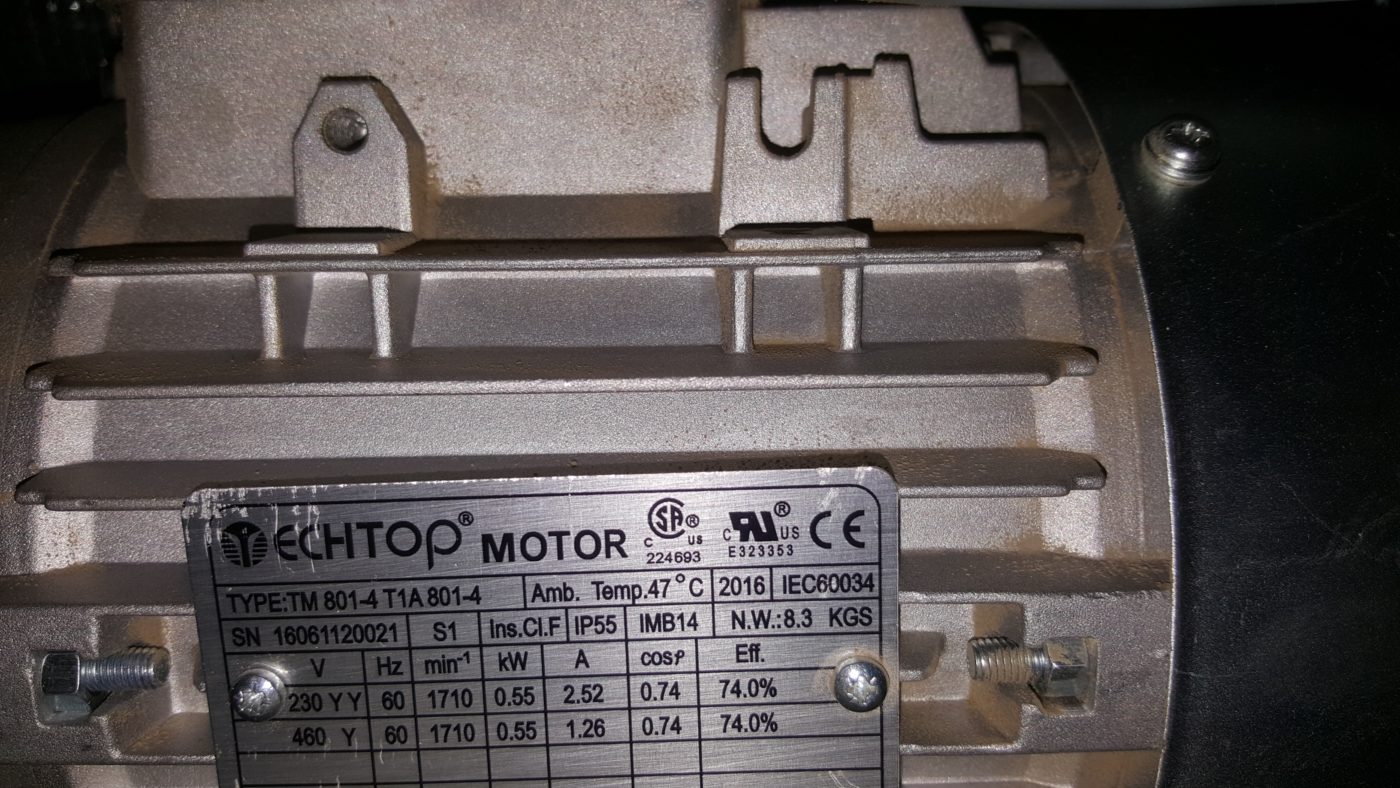Cafeologie
The drum rotation speed – Giesen W15.
A Giesen roaster controls the speed of all its motors through frequency inverters. These are devices that raises or lowers the frequency of the output electric current.
An electrical motor powered by lower frequency spins its shaft at a lower speed. A motor powered at a higher frequency spins its shaft at a higher speed.
The shaft rotational speed on a single-phase electric motor calculates as N = 120 x F / P. F is the frequency of the electric current and P is the number of poles of the motor. The value obtained (N) is the synchronous speed because the motor is not in load, ie it only spins its shaft.
When the electrical motor is under load, the speed decreases due to a “slip”. The higher the load, the greater the slip. A blocked motor (the shaft does not rotate) will have a 100% slip. The slip calculation formula is s = (Ns – Na) / Ns, where s is the slip, Ns is the synchronous speed and Na is the shaft speed.
All electric motors have an identification plate attached to the motor with rivets. This plate should tell you everything there is to know about your motor. Here is an example.

In the example above we have a 4-pole motor. In load, this motor rotates with a speed of 1710 RPM.
In theory, this motor should rotate at a speed of 1800 RPM (120 x 60/4). Yet the manufacturer specifies a nominal speed of 1710 RPM. In this case, using the above formula, the slip is s = (1800 – 1710) / 1800 = 0.05 so 5%. In practice, this slip will be smaller and I explain below why.
The gear-motor connects the electric motor shaft with the drum shaft . Each gear motor has an identification plate attached. Here is an example.

Through a system of gears, this gear motor slows down the speed of the electric motor shaft by 20 times (the ratio).
Powered by a 60 Hz frequency, the motor will have a 5% “slip”. Powered with less than 60 Hz, it will have a smaller slip which by my estimation is 2.5%. I verified the calculation with a tachometer like this.

To use this tachometer, remove the round cover from the faceplate. It houses one of the bearings on which the drum shaft sits. Now you can measure and check its speed using the tachometer above.
Calculation example
Let’s say you’ve set your Giesen to 44 Hz. What will be the drum RPM?
Powered by an electrical current of 44 Hz, the motor will rotate at 120 x 44/4 = 1320 RPM but we must also take into account a slip of 2.5%, so the motor shaft speed will be 1287 RPM.
The gear-motor de-multiplication factor is 20:1. The rotational speed of the electrical motor shaft will be 20 times slower: 1287/20 = 64.35 RPM. You can check this value with the tachometer. The actual speed could differ due to aged bearings or electrical tension fluctuations.
…
Smaller batches, higher speed.
Bigger batches, lower speed.
Optimal speed depends on the drum diameter, no matter what your batch size is.

